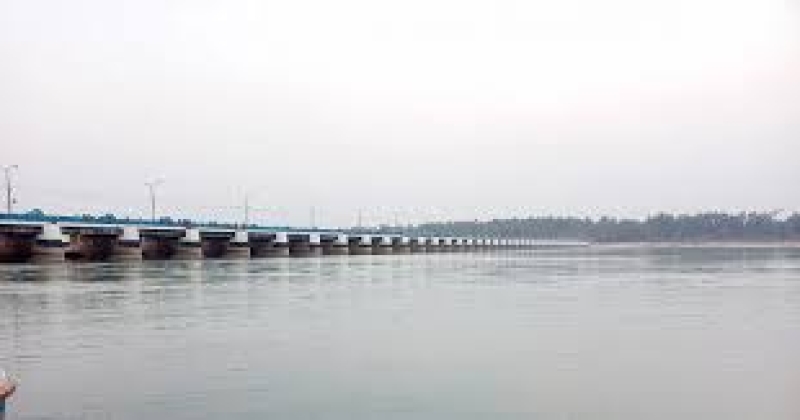- Intimidation or bloodshed cannot halt Bangladesh’s march to democracy |
- Khaleda Zia integral to an important chapter in BD history: Yunus |
- Enthusiasm marks Victory Day celebrations across Bangladesh |
- Dhaka-Delhi ties deep; to be shaped by trust, dignity, mutual respect |
- EU deploys election observation mission to Bangladesh |
Rising Teesta Water Threatens Vegetable Farming in Lalmonirhat

The water level in the Teesta River at the Dalia Barrage in Lalmonirhat has suddenly surged, inundating newly emerged shoals and raising concerns among local farmers. In response, the Water Development Board has opened four sluice gates at the barrage to manage the rising water levels.
The flow began increasing after 4 pm on Saturday, reaching 50.10 cm by 6 pm, which is about 4 cm above the normal winter level for the dry season.
This sudden rise in water coincides with a planned 48-hour sit-in protest by locals along the riverbanks from February 17-18, demanding a fair distribution of Teesta water, which is shared with India.
Farmers fear their crops—such as garlic, onions, sweet pumpkin, pulses, and other produce growing on sandbars—will be destroyed by the flooding. Some villagers suspect that India may be releasing water upstream, though this allegation has not been confirmed.
Sahed Mia, a local resident, said, “We are planning a movement for Teesta water, and just at that moment, India is releasing water. This is India's strategy, as they never release water during this season.”
Hadiul Islam, another resident, noted that the water began rising abruptly in the afternoon, submerging sandbars in the Teesta Barrage area. Fisherman Sabur Ali, who has cultivated potatoes, garlic, onions, and cauliflower on three bighas of land on the sandbar, expressed worry that further water release from India would flood his fields.
Nurul Islam, the water measurement operator at Dalia Water Development Board, confirmed the rise in water levels due to water release from India, but said they are unsure how much more water is expected.
Despite the rising water, Asadul Habib Duloo, coordinator of the Teesta River Protection Movement and BNP district president, reiterated that the 48-hour sit-in protest will proceed as planned on February 17-18.

